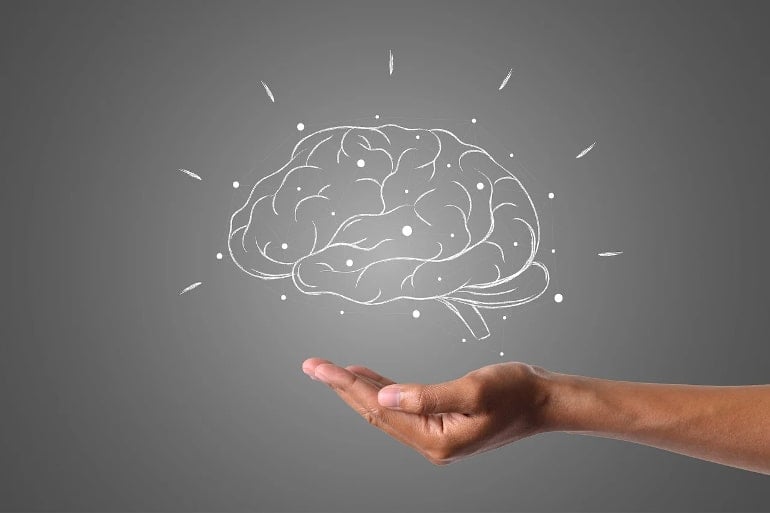Summary: Researchers identified hundreds of new genomic loci that help explain how the brain is shaped.
Source: UCSD
An international team of scientists has used atlases of the human brain informed by genetics to identify hundreds of genomic loci. Loci is plural for locus, and in genetics indicates the physical location of a gene or variant on a chromosome.
The work was led by Chi-Hua Chen, PhD, associate professor in the Department of Radiology at UC San Diego School of Medicine. The findings are published in the February 3, 2022 online issue of Science.
“The complexity of the human brain has equally eluded and fascinated scientists for centuries,” said first author Carolina Makowski, PhD, a postdoctoral fellow working with Chen.
“A large part of how our brain is shaped boils down to what is entwined in our DNA. The last decade has seen a flourish in studies mapping different regions of the brain to unique genetic codes that naturally vary in the population. The way these brain regions are defined, however, can have an important impact on findings, something that we highlight in this work.”
By and large, construction of the human brain is determined by heredity, though factors like environmental exposures also play a role, particularly during sensitive periods of neurodevelopment during childhood. Large-scale MRI and genetic datasets have increasingly illuminated the common genetic variants that help build the human cerebral cortex — the outer, layered sheet of wrinkled tissue associated with humans’ highest mental capabilities, such as language, memory, perception, awareness and consciousness.
The latest study goes further, using genetically informed brain atlases in genome-wide association studies (GWAS) of regional cortical surface area and thickness in 39,898 adults and 9,136 children. GWAS are studies that scan complete sets of DNA or genomes of many people to find genetic variations, usually those that may be associated with a particular disease.
The team focused on the cortex and used atlases with boundaries defined by genetics that had been developed previously by the study authors, including William S. Kremen, PhD, professor of psychiatry, and Anders Dale, PhD, professor of neuroscience and radiology, both at UC San Diego School of Medicine.
“Imagine you’re planning a cross-country road trip,” said Makowski. “You would likely turn to a road map or GPS to navigate your way around, and you would be less interested in consulting other maps based on topography or physical features of the landscape to get to your destination.
“Similarly, how we define brain regions should depend on the research question at hand. With this approach of using genetically defined atlases, we were able to uncover the largest number of genetic variants to date associated with the size and thickness of the cortex.”

The researchers found 440 genome-wide significant loci in the discovery cohort and 800 in a post-hoc combined meta-analysis.
“Intriguingly, many of the genes that these loci map to are also associated with neurodevelopmental disorders, such as autism, epilepsy and intellectual disability, and dementia,” said Chen.
“To some extent, the molecular machinery for normal brain development and disorders overlaps, which could reflect a continuous spectrum of genetic effects on normal brain structural variation to aberrant neurodevelopment. One possible mechanism is that certain genetic compositions cause abnormal brain development, which leads to neurodevelopmental disorders. The loci we discovered can be used by researchers for further mechanistic studies of how genes impact the brain and diseases.”
Co-authors include: Weixiu Dong, Hao Wang, Yan Wu, Jingjing Zou, Cin Liu, Sara B. Rosenthal, Donald J. Hagler Jr., Chun Chieh Fan, Terry L. Jernigan and Kun Zhang, all at UC San Diego; Dennis van der Meer and Ole A. Andreassen, University of Oslo, Norway; Peter M. Visscher, University of Queensland, Australia; Jian Yang, Westlake University, China.
About this genetics and neuroscience research news
Author: Scott La Fee
Source: UCSD
Contact: Scott La Fee – UCSD
Image: The image is in the public domain
Original Research: Closed access.
“Discovery of genomic loci of the human cerebral cortex using genetically informed brain atlases” by Carolina Makowski et al. Science
Abstract
Discovery of genomic loci of the human cerebral cortex using genetically informed brain atlases
To determine the impact of genetic variants on the brain, we used genetically informed brain atlases in genome-wide association studies of regional cortical surface area and thickness in 39,898 adults and 9136 children.
We uncovered 440 genome-wide significant loci in the discovery cohort and 800 from a post hoc combined meta-analysis. Loci in adulthood were largely captured in childhood, showing signatures of negative selection, and were linked to early neurodevelopment and pathways associated with neuropsychiatric risk.
Opposing gradations of decreased surface area and increased thickness were associated with common inversion polymorphisms. Inferior frontal regions, encompassing Broca’s area, which is important for speech, were enriched for human-specific genomic elements.
Thus, a mixed genetic landscape of conserved and human-specific features is concordant with brain hierarchy and morphogenetic gradients.






